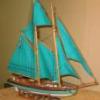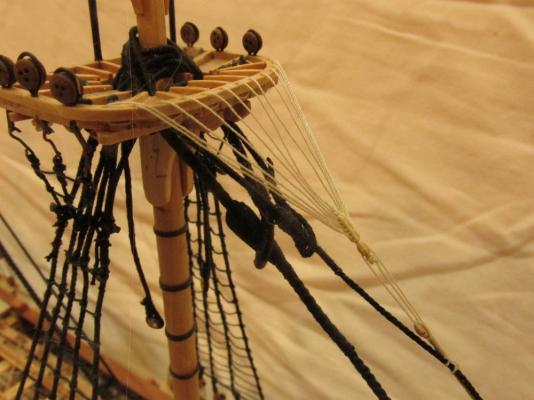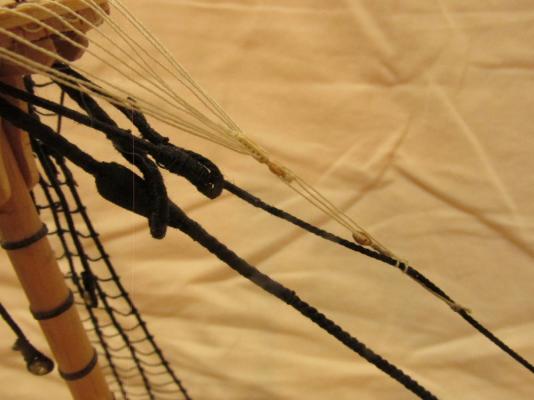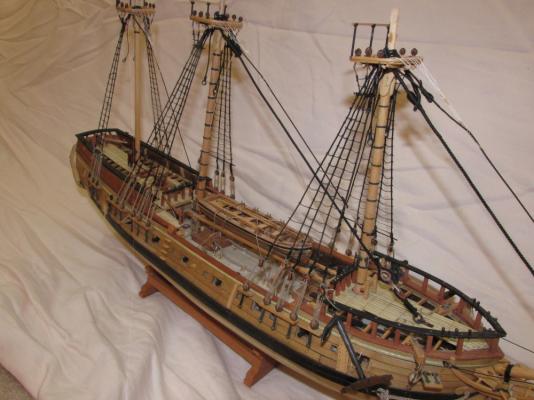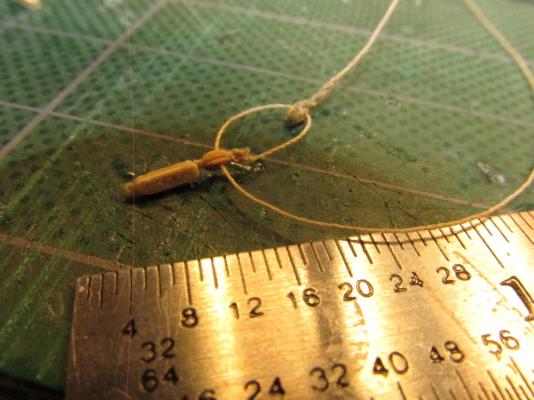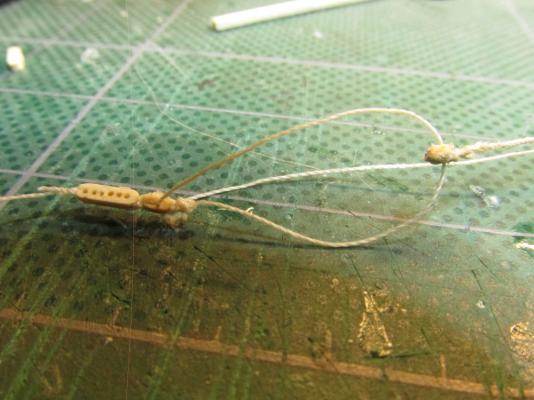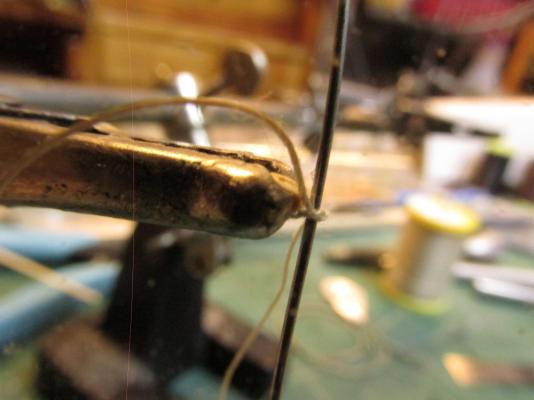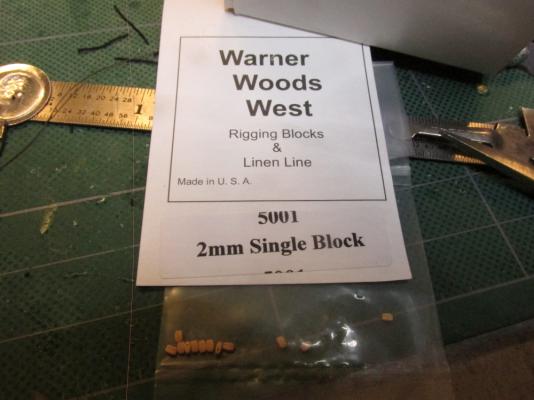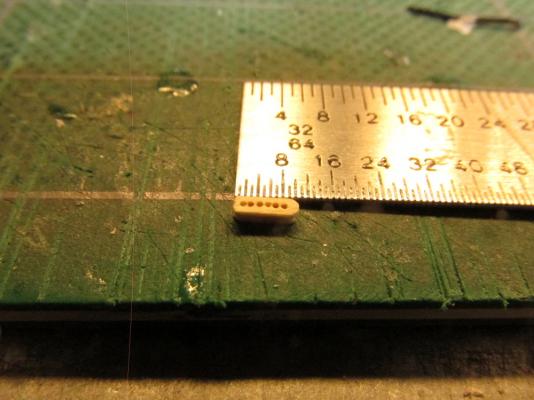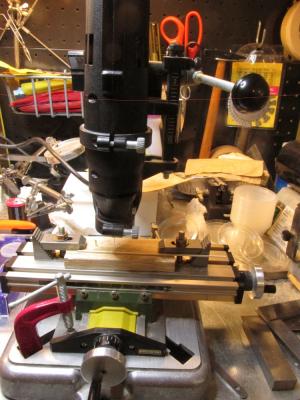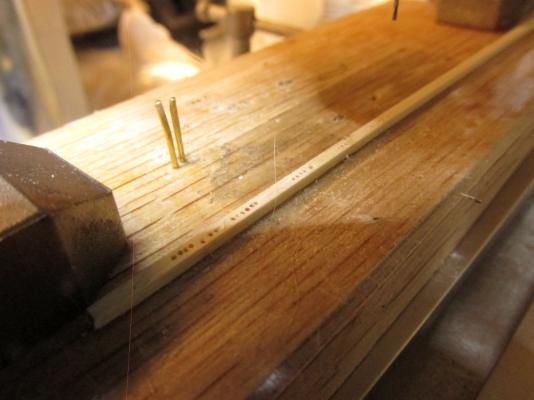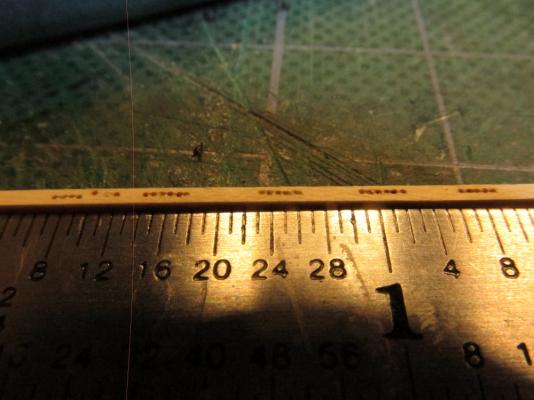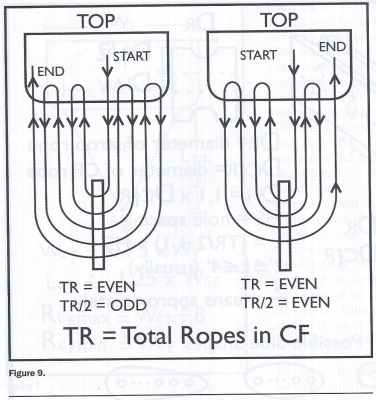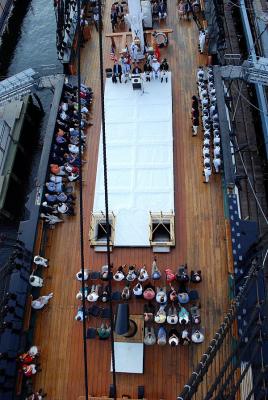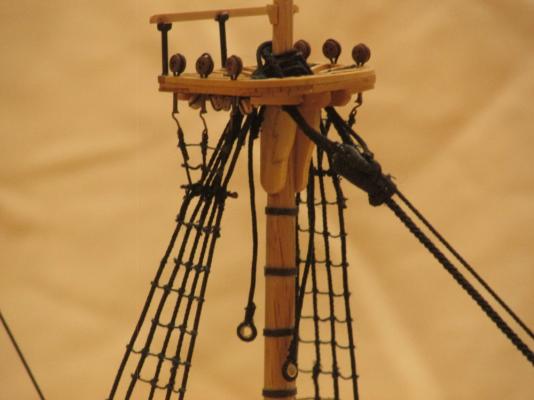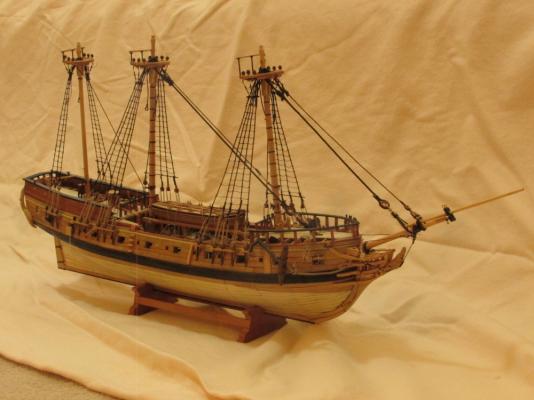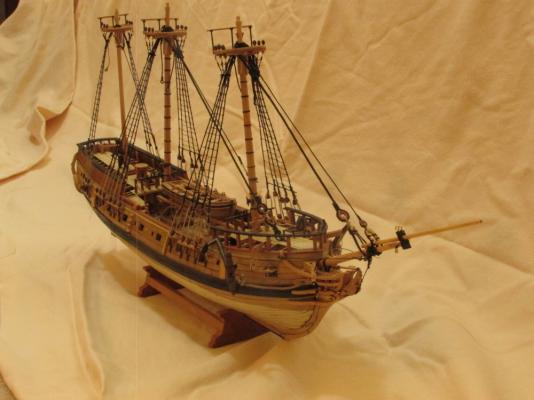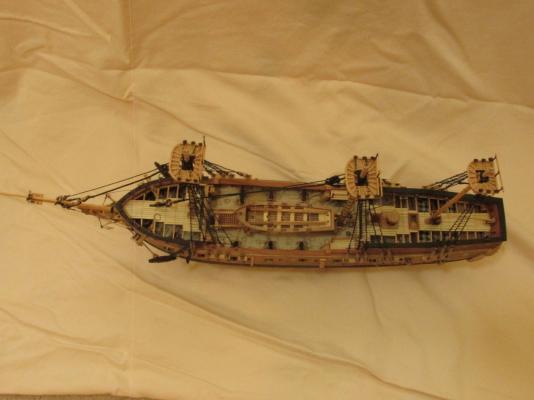-
Posts
2,583 -
Joined
-
Last visited
Content Type
Profiles
Forums
Gallery
Events
Everything posted by JSGerson
-
I ran across this US Navy file I collected some time ago about the mystery pump (discussion started in post #248): ConstitutionPumps.pdf It confirms that it was a fresh water pump and dates back to the 1870's. Unfortunately, now I cannot find the website source I got it from.
- 572 replies
-
- constitution
- frigate
-
(and 1 more)
Tagged with:
-
Dan - Nope, I don't have Nos., 24402 or 24403 on the CD. I even have a bunch of plans I downloaded from the US Navy (but can't seem to find their internet source now) and there not listed there either. If I find the Navy source again I'll let everyone know. If you can find your source who knows what else is there? Jonathan
- 572 replies
-
- constitution
- frigate
-
(and 1 more)
Tagged with:
-
Dan - I have the CD from the Constitution Museum Store you describe but I can't find anything labeled: 'Drainage, Flooding, Fresh Water, and sanitary piping" or '0930 Orlop' or '0929 Berth' or '0928 Gun.' Are you sure it came off that CD and not something else? I plan sometime in the future to build my own Conny model once my Rattlesnake build is done. I'm gathering all my research material now so when I'm ready to build, I won't have that excuse not to start. Jonathan
- 572 replies
-
- constitution
- frigate
-
(and 1 more)
Tagged with:
-
It's a thought, but I'll try adjusting the line first. I do have a supply of music (piano) wire in a variety of sizes.
- 974 replies
-
- rattlesnake
- mamoli
-
(and 1 more)
Tagged with:
-
GuntherMT - I did notice the alignment change. The problem I had, was that the stays are not very taught so any line attached to them is going to tug on it. I'll try to readjust them to reduce the obvious kink in the stays. Thanks for keeping an eye out for me. Jonathan
- 974 replies
-
- rattlesnake
- mamoli
-
(and 1 more)
Tagged with:
-
Now it was just a matter of weaving the lines to make the crowsfeet and securing the euphroes to the stays.
- 974 replies
-
- rattlesnake
- mamoli
-
(and 1 more)
Tagged with:
-
After the second block was fashioned, the pieces were assembled. The lines for the crowsfeet were made long to ensure there was enough when it was rigged to the model.
- 974 replies
-
- rattlesnake
- mamoli
-
(and 1 more)
Tagged with:
-
Once the block was attached, it too needed a loop so a line could be attached and fastened to a block attached to the stay. The loops at both ends were made using a piece of wire to form the loop opening.
- 974 replies
-
- rattlesnake
- mamoli
-
(and 1 more)
Tagged with:
-
Assembly At one end of the euphroe is a small loop used to attach the center crowsfoot line. At the other, a four inch block needed to be attached. A four inch block works out to 0.0625” or 1.59mm. The smallest block I have seen/used is one made by Warner Woods West (warwoods@infowest.com) at 2mm. I was using his blocks before Chuck Passaro’s Syren Ship Model Company started selling theirs. However, Syren’s 2 mm are a bit bigger than Warner Woods’. Luckily, I had some leftover from my Evergreen build.
- 974 replies
-
- rattlesnake
- mamoli
-
(and 1 more)
Tagged with:
-
The pieces were cut off the strip and the ends rounded. A groove was filed along the length of the euphroes for the rope stroping.
- 974 replies
-
- rattlesnake
- mamoli
-
(and 1 more)
Tagged with:
-
Euphroe The euphroe is a special type of “block” which gathers the lines coming off of the mast top. In my case, at 1:64 scale, it worked out to about 3/16” in length. According to Sproul, there was no universal shape used. He provided different examples from oval to egg to straight with various cross sections. At this scale I stuck with the very basic – straight with rounded ends. I started with a strip of 3/64” square boxwood which I mounted on my rotary drill press stand equipped with an X-Y table. After numerous fiddlings and adjustments with the table to get the wood strip lined up with the table, I used a #78 drill to drill 6 holes for the main and fore masts and 5 holes for the mizzen mast euphroes. I am amazed that I got what I did. The drill press stand is not ridged. Moving the drill up and down with the lever, has a minute lateral movement. To make matters worse, the drill (a product of Sears not Dremel) does not spin exactly on it center axis so it has a minute wobble. One of these years I’ll get a proper drill press…someday.
- 974 replies
-
- rattlesnake
- mamoli
-
(and 1 more)
Tagged with:
-
That being said, according to Mr. Antscherl, who quotes Steel, the crowsfoot is made up of ¾” circumference line which converts to ¼” diameter rope (actually 0.24”). At 1:64 scale, that works out to 0.004” thread. That is thinner than normal cotton sewing thread. OK, I need very fine thread. Trying to find some and getting what you want is not so simple. In the world of thread (at least for the normal consumer) there is sewing (needle point, embroidery, clothing, etc.), thread and fiber manufactures, and even fly fishing suppliers among others, nobody talks the same language and nobody talks thread diameters. Everybody it seems has different ways to describe thread sizes not to mention plies, weights, strength, materials, etc. except diameters. Early on during this build, I tried using fly fishing thread size 3/0 (whatever that means) for sizing rope and didn’t like it much because the thread fibers were not twisted very much and would get a frayed look to it. Mr. Anscherl stated that he used brown 6/0 fly fishing thread. I don’t have a local source of fly fishing supplies and must buy mail order. The postal rates make the cost of a spool of thread ridiculous. Going back to my only local hobby store, Hobby Lobby (which is more of a crafts store), I bought some hemp-colored two-ply polyester thread. That seemed to do the trick. As near as I could measure it, it came close to the desired diameter. Pure polyester doesn’t fray like cotton so doesn’t need to be waxed either. Although when looked at with a magnifying glass, it doesn’t have the look of rope, but at these scales even if it did, no one could see it so it doesn’t matter.
- 974 replies
-
- rattlesnake
- mamoli
-
(and 1 more)
Tagged with:
-
Crowsfoot According to David Antscherl, it is now time to make the three crowsfeet. As it happens, the latest issue of the Nautical Research Guild’s Journal (Vol. 60, No. 2 Summer 2015) has an eight page article complete with photos, formulas, and diagrams by William E. Sproul entitled “Making a Crowsfoot Assembly.” How convenient…or so I thought. Up until this point I had initially followed Mr. Petersson (Rigging Period Ship Models) and then Mr. Antscherl, when I got his book. They seemed to match where their details over lapped. However Mr. Sproul appears very knowledgeable as well, but things became less certain with all the detail he provided. To determine the number of ropes that made up a crowsfoot, I counted (as best I could) the ropes in the crowsfoot as indicated on Harold Hahn’s plans and got 13. Neither the Mamoli nor the Model Shipways kit used the crowsfoot in their rigging plans. Antscherl’s book on rigging a sixth rate sloop, which is very similar to the Rattlesnake had 23 ropes. Mr. Sproul gave a formula to determine the number of ropes which he said was between 10 -24; so far so good. However he also stated that the number would have been an even number. He stated: Both Antscherl and Petersson show an odd number of lines and the crowsfoot line secured to the euphroe in direct contradiction to Mr. Sproul. Maybe it was done both ways, but since I had already drilled the holes in the tops with an odd number of holes, I will continue to follow Mr. Antscherl.
- 974 replies
-
- rattlesnake
- mamoli
-
(and 1 more)
Tagged with:
-
- 572 replies
-
- constitution
- frigate
-
(and 1 more)
Tagged with:
-
Fine work! I would strongly suggest that you add some pins to the stanchions so that you can anchor the assembly to the deck. I've read numerous build logs where the pin rails have been pulled off the deck when rigging lines were attached.
- 1,348 replies
-
- constitution
- model shipways
-
(and 1 more)
Tagged with:
-
Dave, I'm sure you can make the necessary fixes and most people won't know the difference. Be aware however, there may be ripple effects as a result of the repair down the line as I found out when I compensated for my mistakes. Once your fix is made you will have to check everything from that point forward for fit because now you have deviated from the plans. One of the results of my troubles with the transom was the rudder. I really didn't have much room for the rudder post. It came out of the deck a bit too close to the transom wall, so again I had to be a bit creative.
-
I feel for you. As you know, I had problems with the transom as well. Now I don’t know if this had anything to do with your problems, I documented a correction I had to make that the Practicum did not address. If you look at the image of the transom on Hahn’s plans, you are looking at a foreshortened view. A true view would be perpendicular to the face of transom. As a result, if you made your transom template directly from the Hahn plans, it was too short. I looked back over your build log and didn’t see anything where you addressed this (at least in the log). A first glance, your transom, as compared to Mr. Hunt’s appears to be installed higher. I counted the planks below your transom windows and got five, the same as Mr. Hunt’s. On my model, I ended up with four. I think if you had four planks, the transom would shift down giving more room at the top. If you made the mistake I described above and corrected it, then that would make the transom taller and also force you to increase the angle from the vertical. I don’t know if I helped or hindered you. Do what you have to otherwise you won’t feel right about the model. I’m not saying make it perfect, but make it something that you can accept and live with. Good luck Jonathan
-
The remaining 17 futtock shrouds were made and installed. Then the shroud ratlines were installed just like before. Here is how the model looks at this stage.
- 974 replies
-
- rattlesnake
- mamoli
-
(and 1 more)
Tagged with:
-
Those were and still are my first and only carvings I've ever made. I just took it one small step at a time. All I can say is try it, you have nothing to lose (except wood and time) and who knows, you may be a unknown Michelangelo!
- 481 replies
-
- rattlesnake
- model shipways
-
(and 1 more)
Tagged with:
-
Even with your perceived errors, they appear very minor if at all detectable, in the images. Your planking looks like it well on its way to a handsome hull.
- 481 replies
-
- rattlesnake
- model shipways
-
(and 1 more)
Tagged with:
-
Thanks for the feed back. I always learn something from you.
- 515 replies
-
- artesania latina
- whaleboat
-
(and 1 more)
Tagged with:
-
How was the final height achieved? How did you trim the excess wood on something so fragile? Did you just file or sand paper it?
- 515 replies
-
- artesania latina
- whaleboat
-
(and 1 more)
Tagged with:
-
You had the same results as me on those moldings. Your triple molding doesn't look too bad from what I can see except the grooves aren't as pronounced as the double - same as I got. Those wooden molded surfaces are very delicate and will dent real easy. I immediately used a couple coats of poly-wipe to saturate the wood to protect them.
About us
Modelshipworld - Advancing Ship Modeling through Research
SSL Secured
Your security is important for us so this Website is SSL-Secured
NRG Mailing Address
Nautical Research Guild
237 South Lincoln Street
Westmont IL, 60559-1917
Model Ship World ® and the MSW logo are Registered Trademarks, and belong to the Nautical Research Guild (United States Patent and Trademark Office: No. 6,929,264 & No. 6,929,274, registered Dec. 20, 2022)
Helpful Links
About the NRG
If you enjoy building ship models that are historically accurate as well as beautiful, then The Nautical Research Guild (NRG) is just right for you.
The Guild is a non-profit educational organization whose mission is to “Advance Ship Modeling Through Research”. We provide support to our members in their efforts to raise the quality of their model ships.
The Nautical Research Guild has published our world-renowned quarterly magazine, The Nautical Research Journal, since 1955. The pages of the Journal are full of articles by accomplished ship modelers who show you how they create those exquisite details on their models, and by maritime historians who show you the correct details to build. The Journal is available in both print and digital editions. Go to the NRG web site (www.thenrg.org) to download a complimentary digital copy of the Journal. The NRG also publishes plan sets, books and compilations of back issues of the Journal and the former Ships in Scale and Model Ship Builder magazines.


